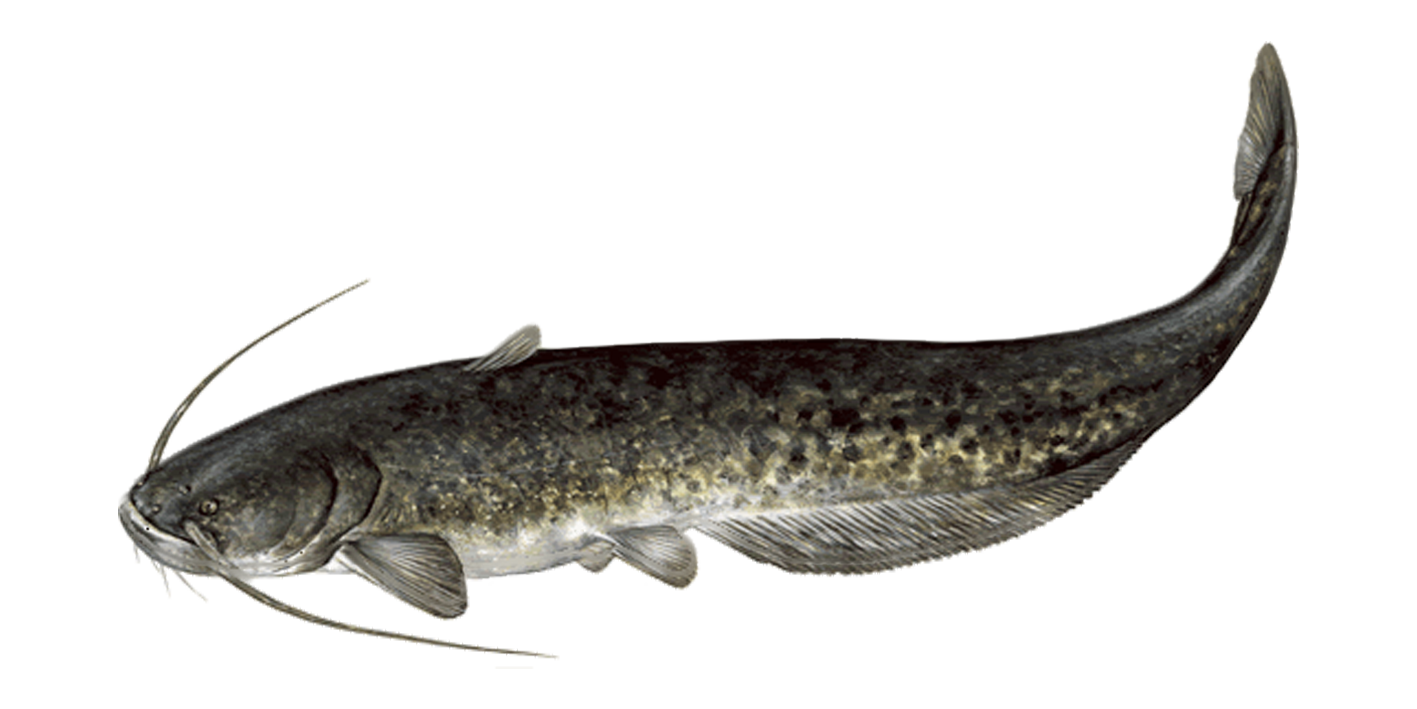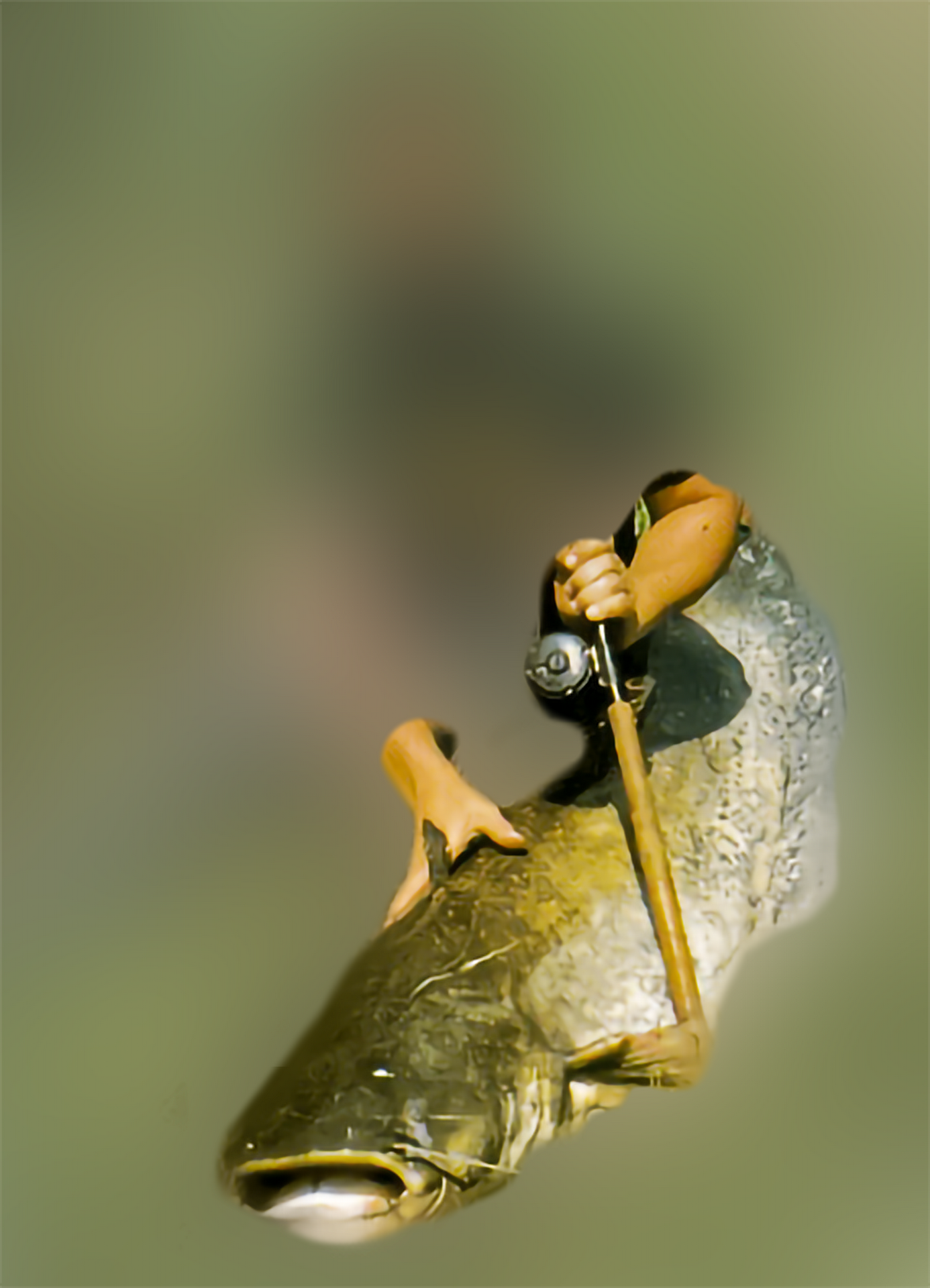

"This odd-looking immigrant to British waters is called a Catfish because of its whiskers - which are, in fact, feelers packed with taste buds".
There are only a few waters stocked with Wels Catfish in the UK.

Catfish (Wels) (Silurus glanis)
Average Weight -The Wels Catfish is the largest true freshwater fish, under perfect conditions in Europe it can reach unbelievable sizes of up to 5 metres in length and weight over 600 lbs.
In the UK however, Wels Catfish do not reach these colossal sizes. Over here, they have an average length of around 80cm and an average weight of around 18 lbs (7.5 kg). With that said, finding one which weighs 40 lbs (18 kg) or more is not beyond the realms of possibility.
Distribution - There are only a few waters stocked with Wels Catfish
The Wels Catfish - also called the Catfish Wels, Catfish or Wels - cannot be mistaken for any other fish in British waters (except the Burbot which is probably now extinct in Britain).

It has a long tapering body, a large head and dull, mottled skin. Colours vary, but generally it has a dark grey back with pale brown flanks and a whitish belly.
This species of Catfish is native to Eastern Europe and the South West USSR. Populations have been established in much of continental Europe as well as Britain.
They were first successfully introduced to England at Woburn Abbey in 1880, though there had been an unsuccessful attempt some 15 years earlier. Most British Wels are descended from this original stock. Their range was extended considerably in the 1960s, with many people illegally stocking waters.

Wels are predatory fish and, like most predators, spend their early life feeding on invertebrates. As they grow, they start to feed mainly on fish.
They are noted as nocturnal predators, though many have been caught in daylight.
As with all species of Catfish (which is only a term for fish, both freshwater and marine, which have 'whiskery' features), Wels are mostly active near the bottom, so other bottom dwellers such as Tench are a particular favourite, as are the larger freshwater Shellfish.
They also sometimes feed higher in the water, coming to the surface to take wildfowl and - according to myth - the occasional dog and even sheep.
Wels have huge jaws, so there is no problem about being able to gulp down a small hound in one mouthful.
These Catfish were introduced to Britain relatively recently - the late 19th century - and so have not reached anything like their maximum size.
They are also adapted to warmer weather than is usual in Britain, so it is highly unlikely that British Wels Catfish will ever grow large enough to worry pets or livestock.
"Wels Catfish do best in still waters and large, slow flowing rivers."
In Britain the Wels Catfish are confined to a few reservoirs, lakes, gravel pits and canals in the South-East and Midlands but they are slowly spreading as a result of both legal and illegal stocking.
The Wels is one of the rare freshwater fish which forms a crude nest for the protection of its eggs. The Male Wels hollows out a small depression in the bottom and often partly lines it with vegetation. Spawning takes place when the water temperature is high enough - about 19C (66F) - usually between May and July in a warm summer. The Female Wels sheds a sticky pile of up to half a million eggs into the nest.
These are guarded by the Male Catfish until after they hatch. Obviously the vast majority of the fry must die during the first few months - probably over winter otherwise any water would quickly become overrun.
After about three weeks the eggs hatch and the Male Wels loses interest in his offspring, except perhaps as a tasty snack. The young fish take between three and five years to mature, at which point they can weigh anything from 2-101b (0.9-4.5kg).
In England, Wels reach weights of around 20-301b (913.6kg) in ten to fifteen years. At this weight they usually stop growing even though they can live for much longer than this. It seems British waters are too cold, or perhaps the prey species too small, to encourage growth to the huge proportions of Eastern European fish.
An angler proudly shows off a 72lb (32.7kg) monster from the River Ebro in Spain. Though night fishing is best, this 'Cat' came during the day, and fought for a full 40 minutes on 22lb (10kg) main Line.
